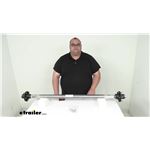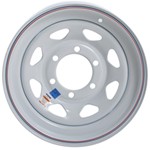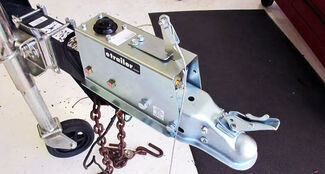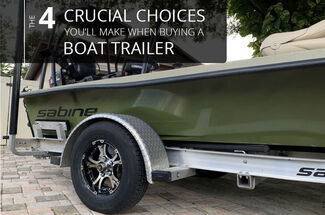
The Basics of Boat Trailer Bunks
Before we're properly able to compare and contrast them, we should start by going over exactly what they are. Trailer bunks are quite simply, the part of your trailer that directly supports your boat's hull, and helps it launch into the water easily. But how you go about these goals varies from bunk type to bunk type. Let's look at the specifics.

What are Boat Trailer Bunks?
Bunk boards are easy to use, and they're even easier to replace. The only issue comes in when you consider the rest of your trailer. Because you need to back your boat trailer so far into the water to launch your boat, your other trailer components (axles, bearings, hubs, etc.) will be much worse off for the frequent dips–especially if you're launching into salt water.


Rollers can simplify the launch process significantly, as your boat will simply roll off of your trailer. This can be a double-edged sword though, and you wouldn't be the first person to drop their boat onto the pavement because they "got ahead of the game" by removing the supporting straps before hitting the launch ramp. If that statement instilled a healthy fear of rollers in you, we understand–but taking care to avoid this one mistake can lead to an extremely easy loading and unloading process.
Bunk Board Pros
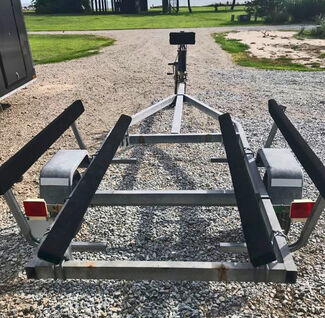
Fewer moving parts can inspire confidence in those who aren't used to rollers They're very easy to maintain or replace on your own, and problems are easily diagnosed They are cost-effective both up front and for seasons to come They provide even support throughout the hull of the boat, making them perfect for particularly heavy boats or particularly long hauls
Bunk Board Cons

They can have trouble loading if your ramp is in bad conditions or the water/wind is particularly rough Despite being easier to replace, they wear out faster Increased friction can make loading harder overall Wood is prone to warping in water and can alter points of contact slightly over time, leading to uneven wear Often require you to back your trailer further down the ramp to load and unload
Roller Bunk Pros
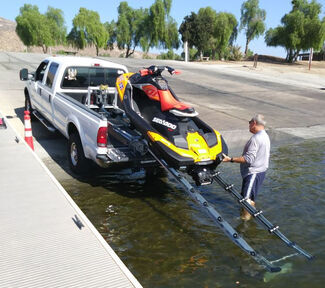
Great for launching in sub-optimal conditions (aka most conditions) They don't require you to submerge your trailer as far, which protects your trailer from water damage and allows you to launch of ramps that would be too shallow for bunk boards to fully submerge in Significantly easier launching overall due to much lower friction
Roller Bunk Cons
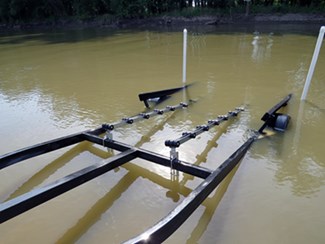
More components means more things that can go wrong Gives less "even" support than bunk boards, and can cause wear (almost always cosmetic) at contact points in particularly heavy boats. This is particularly true if you keep your boat on your trailer for long periods of time More likely to "roll off" if you are launching improperly Rollers are generally more expensive than bunk boards, and have to be replaced when problems arise, rather than being easily repaired
What Bunks should I Use on my Boat Trailer?
There you have it, hopefully we've given you enough information to decide what's best for your boat trailer. The cost-effectiveness and simplicity of bunk boards, or the ease-of-use and flexibility of roller bunks. The really important part of this decision is making sure your boat gets down to the water safely–because at the end of the say, that's really where it belongs right?

Departments
Towing
- Trailer Hitch
- Fifth Wheel
- Gooseneck
- Towing a Vehicle
- Front Hitch
- RV Hitch
- ATV Hitch
- HD Truck Hitch
- Vehicle Wiring
- Brake Controller
- Ball Mounts
- Weight Distribution
Sports and Recreation
Trailer Parts
- Utility Trailer
- Boat Trailer
- Landscape Trailer
- Enclosed Trailer
- 5th/Camper Trailer
- Car Hauler
- Horse Trailer
Vehicle
Contact & Help

What our customers are saying:
"Received already. Yeow! Perfect fit. Thanks for getting the kit to me so quickly."
Rich
Arlington, TX





